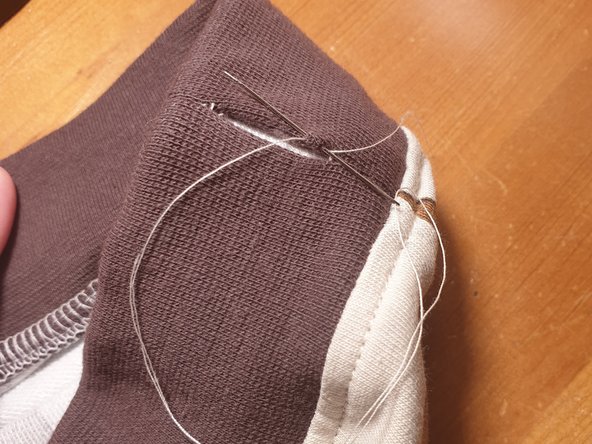crwdns2935425:01crwdne2935425:0






-
Schneide ein Stück Nähgarn ab und fädle die Nadel ein. Nimm lieber ein bisschen zuviel Garn als zu wenig.
-
Stich mit der Nadel an der Kante auf einer Seite der Öffnung ein, und zwar so, dass die Nadel entlang der Kante ein- und ausgestochen wird. Der Stich sollte 1-2 mm lang sein.
-
Lass mindestens 5 cm Faden überstehen.
-
Stich dann an derselben Einstichstelle noch einmal ein und komm an derselben "Ausstichstelle" wieder heraus.
-
Wiederhole das noch ein zweites Mal, sodass du denselben Stich insgesamt 3 Mal genäht hast. Dadurch ist der Faden gesichert und kann nicht mehr herausrutschen.
-
Hier hätte ich eigentlich etwas weiter rechts anfangen sollen, also da, wo noch die intakte Naht ist. Es ist in meinem Fall nicht weiter schlimm, aber du erhältst eine sauberere Naht, wenn du den Faden dort sicherst, wo noch die intakte Naht ist.
crwdns2944171:0crwdnd2944171:0crwdnd2944171:0crwdnd2944171:0crwdne2944171:0